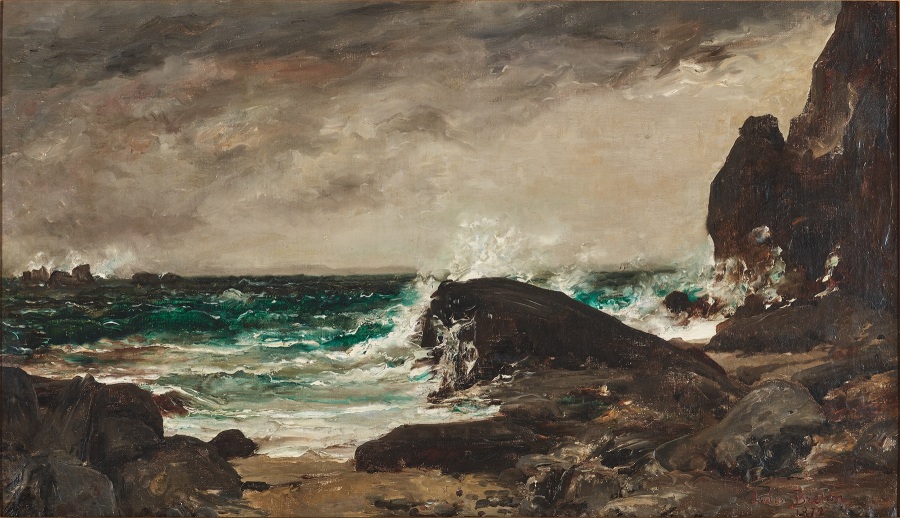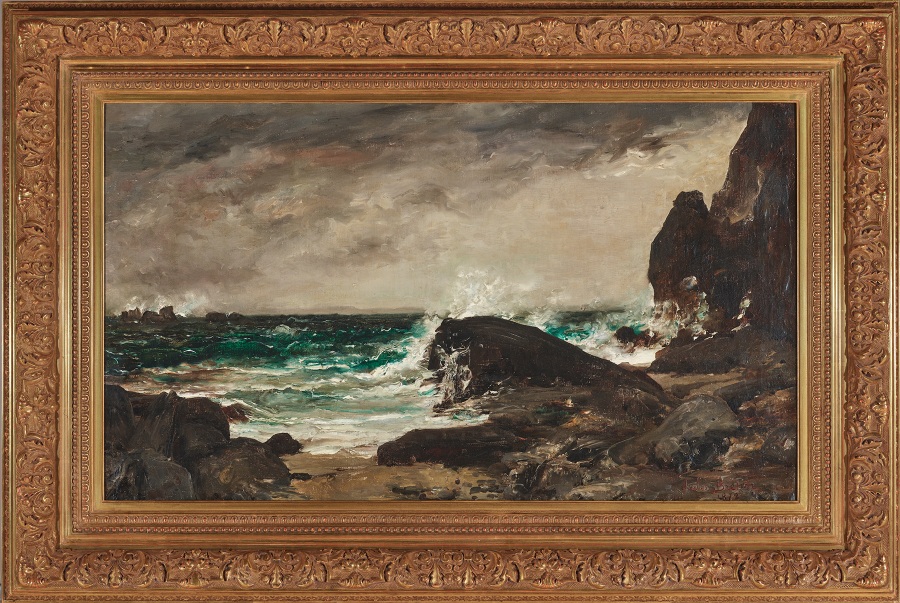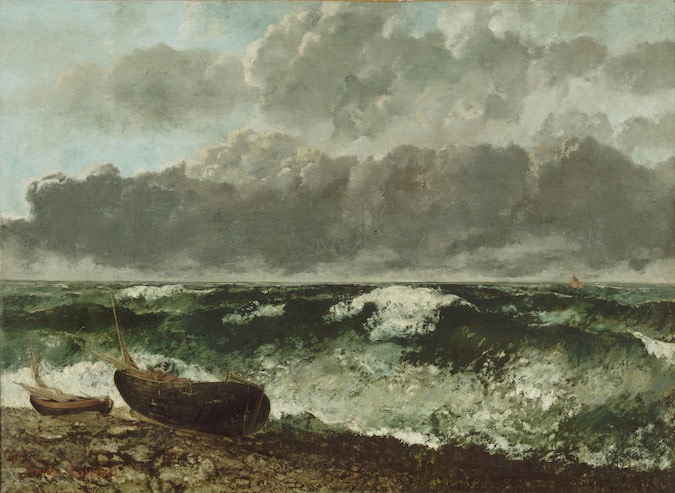Provenance
Goupil & Co, Paris, 1 June 1873 (n°8138, directly acquired from the artist)
Benoît-Constant Coquelin, 14 January 1874 (acquired from the above)
Private collection, France
Catalogue note
Jules Breton painted only three seascapes; Tempête sur la Côte, 1872 (the present painting), Marine Calme, also dated 1872 and possibly a pendant to our picture, (unlocated) and finally a later work from 1883 depicting a stormy sea with gulls (Musée des Beaux-Arts, Ghent, Belgium). When Breton exhibited the latter at the 1883 Paris Salon Triennal, critics aptly compared it to Courbet’s wave paintings from 1869-1871 (P. Lefort, “l’Exposition nationale de 1883, premier article, La Peinture”, Gazette des Beaux-Arts, November 1, 1883, p. 386).
One would be hard pressed to find too many similarities between Courbet and Breton, and there is no stylistic comparison between their figure paintings, the genre that occupied Breton for most of his career. However, it does not seem coincidental that Breton experimented with a new subject and a more virtuoso handling of the paint surface shortly after the 1870 Salon when Courbet exhibited his great wave painting, La Mer orageuse (fig. 1, Musée d’Orsay, Paris). There is both a thematic and stylistic connection between Breton’s 1872 Tempête sur la Côte and Courbet’s wave paintings, especially his 1870 Salon entry. Both show an approaching storm with grey clouds and an agitated sea with waves crashing to the shore. Each painting is devoid of any human presence, a standard motif for Courbet but rare in Breton’s paintings, which focus more on narrative. However, it is Breton’s rare energetic application of the paint in the cresting blue waves and especially the white foam of the sea as it pounds against the rocky coast that most directly emulates Courbet. In other words, Breton is painting like Courbet where his subject becomes more of an abstract interpretation as opposed to a realistic one. Also noteworthy, most of Courbet’s wave paintings are signed in red. Breton rarely signed his paintings this way, however, in the lower right corner of our seascape, he has written Jules Breton, 1872 in bold red paint.
Tempête sur la Côte originally belonged to the famous French actor, Benoît-Constant Coquelin, also known as Coquelin aîne.








